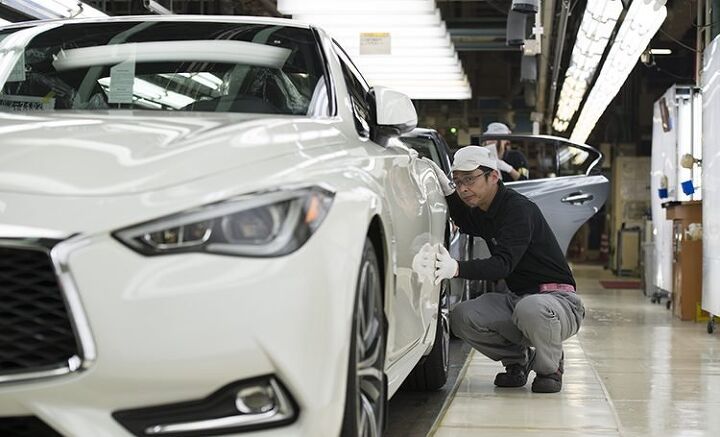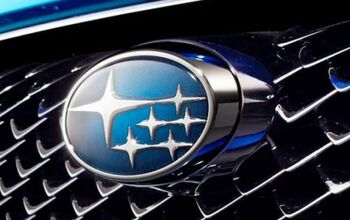Nissan and Subaru Faulted for Decades of Improper Inspection Procedures

Japan appears to be having a problem with its quality control. Nissan Group is conducting updated inspection procedures after details emerged that it allowed uncertified employees to conduct final vehicle checks. However, the Japanese government continues to find issues with the automaker’s practices, forcing it to temporarily suspend new vehicle registrations.
Early reports from an external investigation commissioned by Nissan suggest the certification problem may have begun in 1979.
Subaru faces a similar plight. With Nissan’s inspection issue looming larger than anticipated, Subaru has admitted to following improper procedures for its domestic products. On Friday, the carmaker said final inspections at its main plant have occasionally been handled by employees not listed as certified technicians. The problem has persisted for more than 30 years, according to the manufacturer.
With airbag supplier Takata having admitted to years of falsified testing data and Kobe Steel recently admitting to fibbing about the quality of the aluminum and copper it sells to automakers, something appears to be askew in Japan’s manufacturing sector.
Subaru is currently considering recalling about 255,000 vehicles, including Legacy, Impreza, and Forester models sold on the Japanese domestic market, at a cost of roughly $43.86 million. “The final inspection process is very important and we acknowledge that we did not meet requirements,” said CEO Yasuyuki Yoshinaga at a recent press conference. “It’s always been my goal to make this company good. This issue shows that we’re not there yet.”
“I‘m ashamed that our company has played a role in shaking public trust in Japan’s manufacturing culture,” he concluded.
Like Nissan, Subaru’s issue revolves around uncertified employees using the names of supervisors when signing off on final checks. However, it doesn’t appear to have been done maliciously. While industry standards dictate an accredited person must be present during final inspection, these employees did not appear to know that. The manufacturer has said it is conducting an internal investigation and will release its report to the Ministry of Land, Infrastructure and Transportation on Monday.
The timeframe for Nissan’s report is a little less concrete, according to Bloomberg. While the company has taken measures to remedy the situation, the first attempt didn’t go so well. “Nissan has commissioned a third party to thoroughly investigate the issue and suggest measures to prevent recurrence,” a company spokesman said. “Details of the investigation will be shared at the appropriate time.”
Interestingly, the final certification paperwork isn’t necessary for exported vehicles. So, presumably, affected Japanese models don’t suffer from any glaring quality issues that wouldn’t also be present in export models. If anything, this all amounts to Subaru and Nissan employees taking bureaucratic shortcuts — quite possibly because they didn’t know any better. If that is the case, Yoshinaga-san doesn’t need to be so hard on himself.
Toyota and Honda have already both reported to the Japanese ministry, stating they have discovered no problems with their respective inspection processes.
[Image: Nissan Group]

A staunch consumer advocate tracking industry trends and regulation. Before joining TTAC, Matt spent a decade working for marketing and research firms based in NYC. Clients included several of the world’s largest automakers, global tire brands, and aftermarket part suppliers. Dissatisfied with the corporate world and resentful of having to wear suits everyday, he pivoted to writing about cars. Since then, that man has become an ardent supporter of the right-to-repair movement, been interviewed on the auto industry by national radio broadcasts, driven more rental cars than anyone ever should, participated in amateur rallying events, and received the requisite minimum training as sanctioned by the SCCA. Handy with a wrench, Matt grew up surrounded by Detroit auto workers and managed to get a pizza delivery job before he was legally eligible. He later found himself driving box trucks through Manhattan, guaranteeing future sympathy for actual truckers. He continues to conduct research pertaining to the automotive sector as an independent contractor and has since moved back to his native Michigan, closer to where the cars are born. A contrarian, Matt claims to prefer understeer — stating that front and all-wheel drive vehicles cater best to his driving style.
More by Matt Posky
Latest Car Reviews
Read moreLatest Product Reviews
Read moreRecent Comments
- Formula m Same as Ford, withholding billions in development because they want to rearrange the furniture.
- EV-Guy I would care more about the Detroit downtown core. Who else would possibly be able to occupy this space? GM bought this complex - correct? If they can't fill it, how do they find tenants that can? Is the plan to just tear it down and sell to developers?
- EBFlex Demand is so high for EVs they are having to lay people off. Layoffs are the ultimate sign of an rapidly expanding market.
- Thomas I thought about buying an EV, but the more I learned about them, the less I wanted one. Maybe I'll reconsider in 5 or 10 years if technology improves. I don't think EVs are good enough yet for my use case. Pricing and infrastructure needs to improve too.
- Thomas My quattro Audi came with summer tires from the factory. I'd never put anything but summer tires on it because of the incredible performance. All seasons are a compromise tire and I'm not a compromise kind of guy.

































Comments
Join the conversation
Who certifies inspectors in these factories? Is this part of a manufacturer run in-house class, a third party school? Are there standardized tests?
Compared to the Kobe Steel disaster, where in effect raw materials shipped had incorrect material classifications, the old selling-the-cheap/out-of-spec-alloy-as-premium-by-lying trick instead of remanufacturing, these final automotive inspection shortcomings seem trivial. The business of having a process in control was led by the Japanese under Deming principles. That's what gave the world half-decently reliable cars 40 years ago where things like doors actually fitted properly without hand-fettling with two by fours. Saw that procedure at Volvo making 164E models in 1969. Ford is still trying to figure this one out at plant level, while their execs loft off into the airy-fairy world of digital mobility to boost share prices by getting rave reviews from business writers who haven't a technical clue themselves but foam at the mouth over Silicon Valley buzzwords. The Japanese national final vehicle inspection system, as I understand it, is government bureaucratic jump-through-the-hoops rubbish invented by people who wouldn't know a Deming if they fell over it, circa 1956. Some dope is employed to certify each car he inspects meets Type Approval for use on Japanese roads. White glove person is presented with a finished vehicle, most parts hidden, and has to sign off, yes this particular unit meets previously published and agreed upon specs based on build-sheets and a quick once over. Out-of-date idea. It's a make-work project fully in keeping with the annual vehicle inspections that trashes five year old cars for having a seagull blert on the paint, thereby keeping southeast Asia fully sated with essentially perfect used cars. Of course brand new export cars aren't inspected in this unneeded step - if the production process is under control, there's no need. Still, by not taking this domestic inspection step completely seriously, quite understandably so from our viewpoint, yet admitting guilt under national norms by utilizing inpectors who haven't finished the full 8 weeks of how to fill in a form training, Nissan and Subaru have to perform a ritual step dance on the head of a pin to atone for their shockingly antisocial behavior. Different society, different norms, different way of respecting authority.